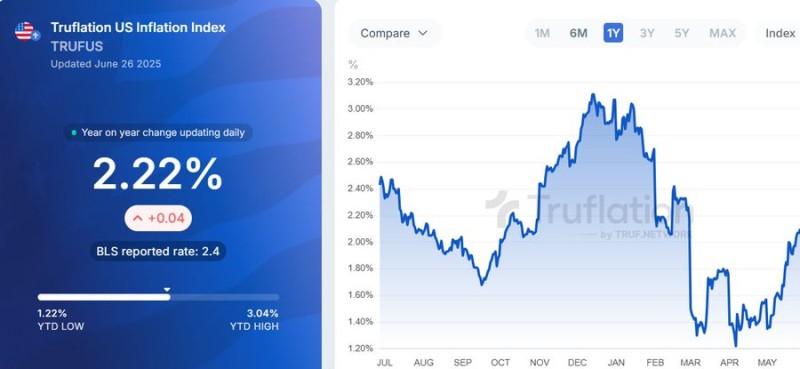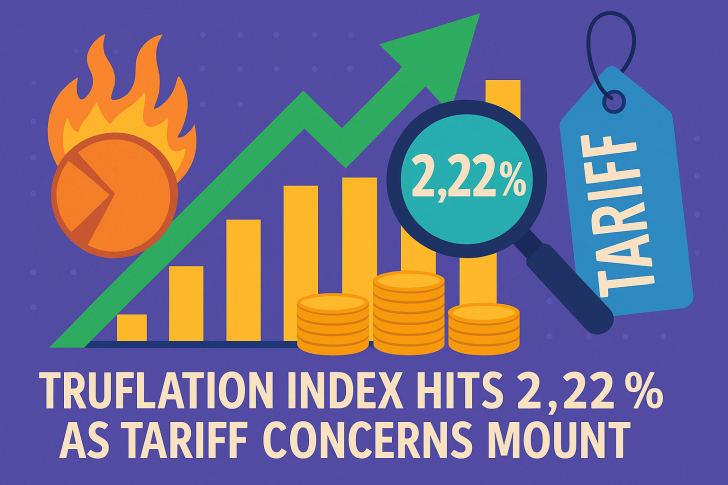As the U.S. economy braces for the second half of 2025, inflation appears to be making a comeback. Real-time data from Truflation indicates a steady rise in consumer prices, reigniting concerns about monetary policy, trade tensions, and the future of interest rates. With the Federal Reserve maintaining a cautious stance, new inflation readings may further complicate the path forward.
Inflation Rises Sharply, Fueled by Tariffs
According to the latest update from the Truflation US Inflation Index, year-over-year inflation in the United States has reached 2.22% as of June 26, 2025. This marks a sharp increase from the year-to-date low of 1.22% in April, representing an 82% rise in just under three months.
While the official BLS inflation figure still stands at 2.4%, Truflation’s real-time tracking suggests a renewed uptick, largely attributed to the reintroduction of Trump-era tariffs. These trade barriers are believed to be driving up input costs across key sectors, leading to inflationary pressure despite an overall cooling trend earlier this year.
Powell in Holding Pattern Amid Uncertainty
In a recent post on Twitter, @EtherWizz_ highlighted this inflation spike and its implications:
“US inflation is rising. Truflation index is at 2.22%, up 82% in 3 months. Powell remains in wait-and-watch mode.”

Federal Reserve Chair Jerome Powell has yet to confirm the next steps in monetary policy, but this unexpected rise may delay any anticipated rate cuts, especially if inflation continues its upward trajectory over the next 1–2 months.
Without new trade agreements to offset the effects of tariffs, analysts warn that inflation could remain elevated through the summer, complicating the Fed’s efforts to stimulate the economy.
Conclusion
With Truflation showing real-time inflation tracking above 2%, and market watchers pointing to geopolitical and trade factors as key drivers, all eyes are now on the Fed’s next move. Unless Washington steps in with targeted trade policy, the path to lower interest rates may stretch even further into 2025.
 Peter Smith
Peter Smith

 Peter Smith
Peter Smith


